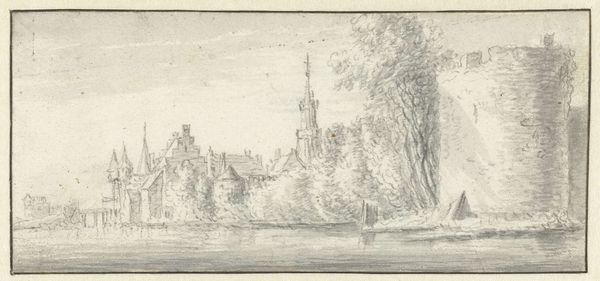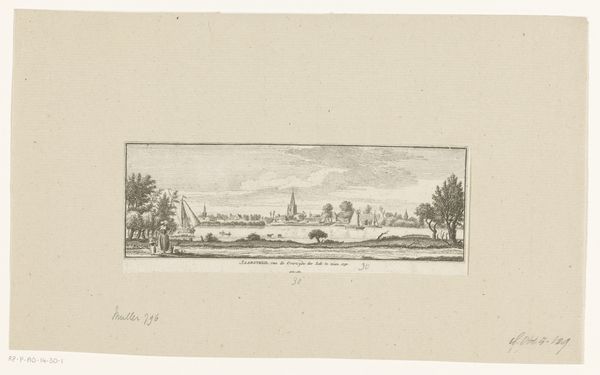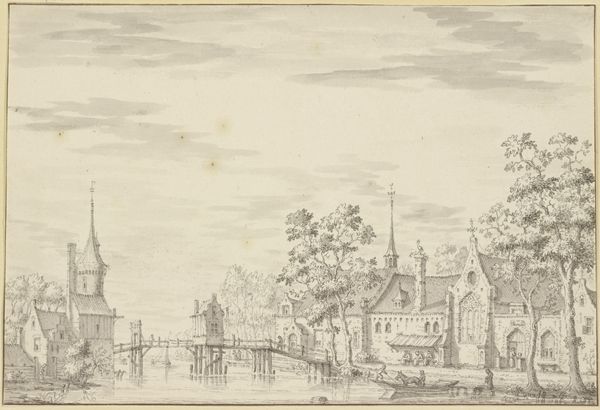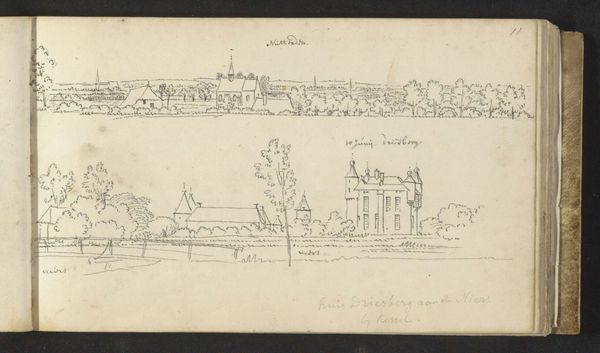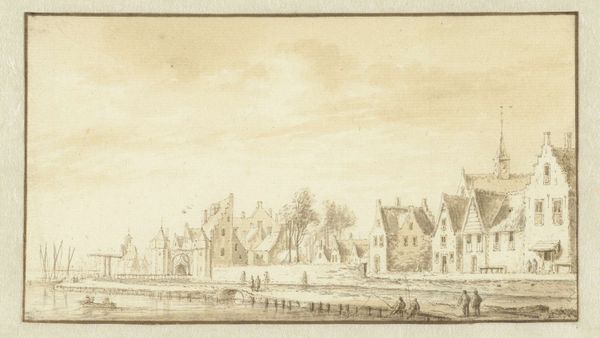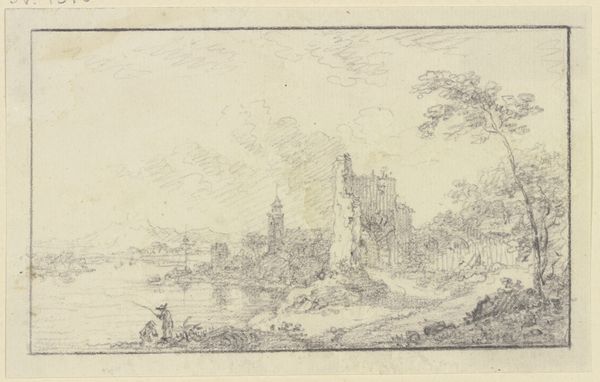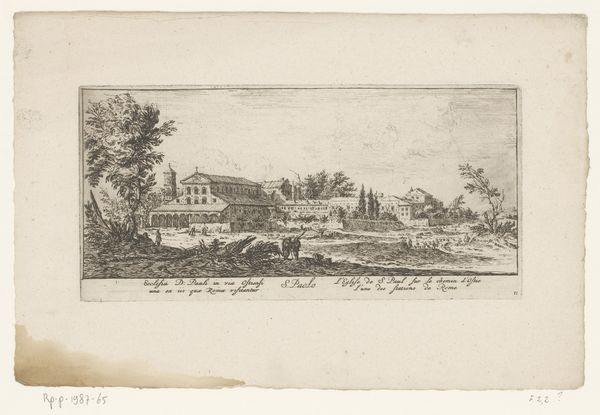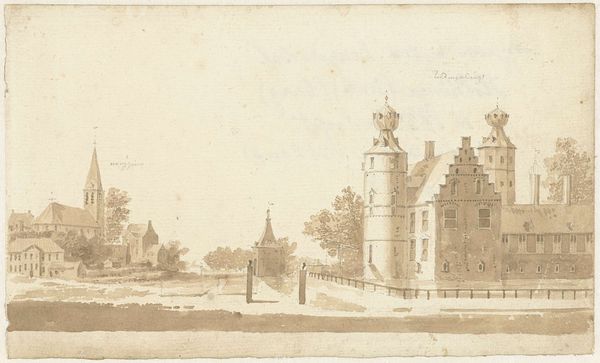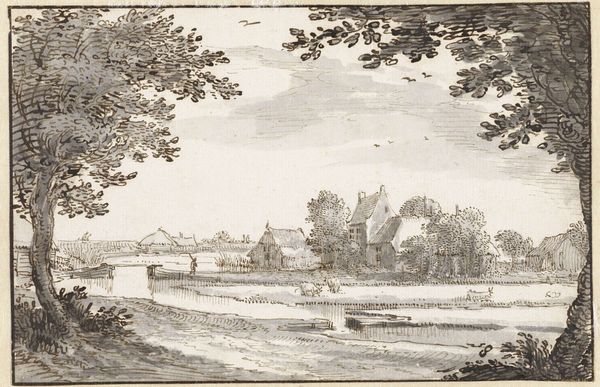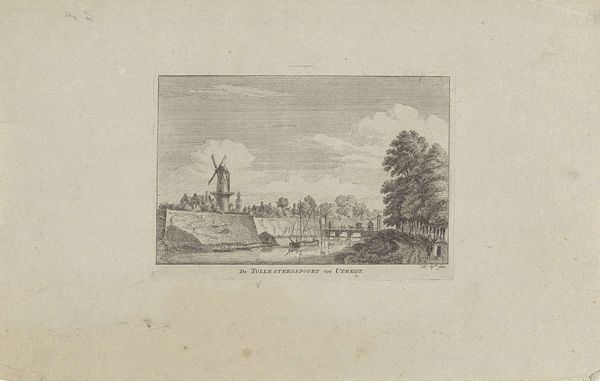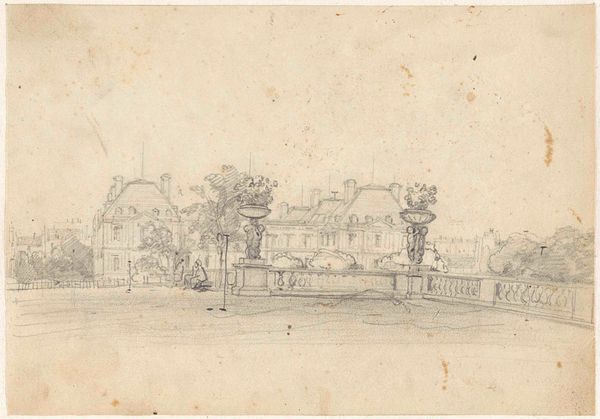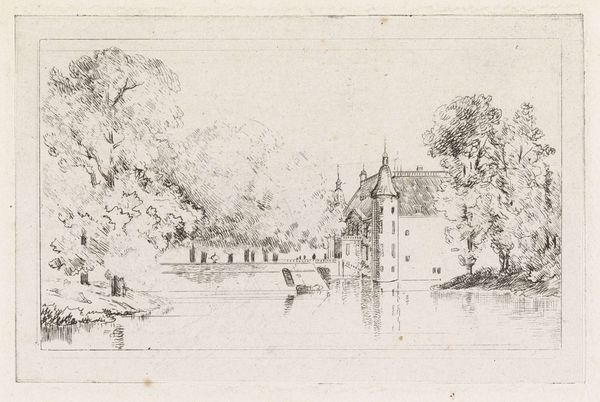
drawing, etching, paper, ink, pen
#
drawing
#
aged paper
#
toned paper
#
light pencil work
#
dutch-golden-age
#
pen sketch
#
etching
#
pencil sketch
#
sketch book
#
landscape
#
paper
#
personal sketchbook
#
ink
#
pen-ink sketch
#
line
#
sketchbook drawing
#
pen
#
cityscape
#
sketchbook art
#
realism
Dimensions: height 84 mm, width 134 mm
Copyright: Rijks Museum: Open Domain
Curator: This delicate drawing is titled "Oude jachthaven te Amsterdam, rechts de Sint Antoniespoort," placing it within a very specific locale of Amsterdam during the Dutch Golden Age. Jan Gabrielsz. Sonjé is credited with its creation. Editor: There's an undeniable sense of calm, isn’t there? The light pencil work and etching gives it an almost dreamlike quality. You can almost feel the cool water. What material would it have been executed on, paper maybe? It seems old, worked. Curator: Yes, it is a pen, ink and etching drawing on paper. Looking closer at its history, depictions of the harbor—of any port—in this era had as much to do with signaling the power and prestige of Amsterdam, a vital artery of global trade at the time, as they did with any inherent aesthetic value of a traditional "landscape." Editor: That connection to trade, to Amsterdam's wealth...it makes you think about the labor that supported such scenes. The craftsmanship of the ships themselves, the infrastructure, what’s absent speaks as much as what is present. It looks like there's even a suggestion of toned or aged paper. It's not just a representation, it's an artifact. Curator: Exactly! Consider the Saint Anthony's Gate pictured on the right, and the structures clustered around it, then realize that Sonjé presents them from a very particular viewpoint to emphasize their prominence. This kind of composition reinforces the symbolic role of architecture in Dutch society. Editor: Thinking about materials further—the portability of pen, ink and paper facilitated artists capturing such ‘snapshot’ views directly. We should remember also the skilled production of the pens themselves and the societal emphasis on recording mercantile life in sketchbooks. How different such imagery is compared to painted maritime scenes that would likely focus on heroic men on surging ships in the waves? This piece is about serene governance! Curator: It's a valuable perspective. I agree; in choosing the medium, scale and detail that he did, Sonjé directs us toward understanding not only the city itself, but the values of its dominant social structures. Editor: It encourages us to consider how materials and process contribute fundamentally to the narratives being presented about seventeenth-century Amsterdam. Curator: Absolutely, seeing the city as the product of material conditions. Thanks for pointing that out. Editor: Of course!
Comments
No comments
Be the first to comment and join the conversation on the ultimate creative platform.
